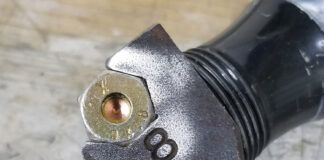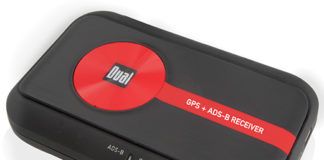A new experience in power management.
In the brave new world of Vertical Power, long runs of snakelike wire bundles crisscrossing the airframe are an antiquity. The VP system, of which there are currently three main types, consolidates all the major electric functions into a single box (or two parallel boxes, if you wish) that controls everything by microprocessor. All current limiting is done by modern solid-state devices that can be finely tuned to their duties, whether thats controlling an electric motor, a servo, a boost pump or a nav light.
Ausmans own airplane uses the VP-200 setup, which is really three units: the display, the controller module and a small switch panel housing the main on/off switch, the mag controller (the mags are never run through the system but a third layer on the L/R/Both switch informs the VP-200 of mag status), and three switches that can be programmed to handle any function under control of the VP-200 as a sort of do-this-right-now override to the main processors integrated logic. High-current items are switched by contactors controlled by the VP-200. Alternators with internal regulation can be accommodated, but those requiring external regulation are managed by the VP-200. All the obvious stuff you can image is bundled into the setup-radios, instruments, lights. And in the course of wiring your own airplane, these are the conductors run first and given most thought. But then, typically, you get to pile on the niggling ancillaries such as pitch and roll trim, interior lights, landing-light wig wag modulators, secondary bus management (in case you have two batteries, two alternators or all four), and silly things like your combined GPS/nav/com requiring more than one power wire, keepalive circuits in engine monitors and EFISes, auxiliary power for your XM receiver or iPod.
Heres the Magic
The real genius of the VP system is the operating logic, in which each phase of flight is broken down and those tasks you would normally perform manually are taken care of more or less automatically. Its clear that Ausman and his team have given considerable thought to the operating logic and have provided multiple ways of either redirecting or overriding the preordained logic.
In each phase of flight-before start, start, taxi, runup, takeoff and climb, cruise (and maneuvering), landing, taxi and post flight-certain systems need to be functioning and checked, which is normally just left up to the pilot. For example, in the before-start mode, you can engage the system with the front-panel switch on the secondary controller. The VP-200 will come alive, switching on only those items you need for the pre-start sequence. Alternately, you can use one of the buttons on the optional key-fob remote control.
You get electrical-system status. You’re asked if youd like to reset your fuel totalizer, and the system reconfigures the engine-parameters display to show the items that are important for the start. Five buttons along the bottom edge of the display are contextual but typically are used to answer queries from the system or move from one mode to the next; however, once underway, the VP-200, by design, moves from one mode to the next on its own.
In the before-start mode, the system asks for your engine start code- remember, there’s no conventional mag key switch, and the VP-200 controls the starter contactor-then enables the start switch. At that time, contextual buttons for boost pump and primer appear; the primer can be set to run the boost pump a predetermined amount of time. Once the engine is started, as noted by a rise in engine speed and oil pressure, the system switches to an after-start mode, turning on the avionics and performing other duties as predetermined by the builder. (Virtually all of the subsystems can be configured to go on and off during any mode cycle.)
Because the VP series has a connection to your GPS, it knows when you’ve begun moving, and will switch next to the taxi mode. When you’re ready for the engine runup, you can push that mode button; a checklist appears on screen, and the engine display changes to highlight manifold pressure, rpm, and mag drop. Ausman and I tested the modes in real time right up to the takeoff /climb phase, and the system appears to work logically and faithfully.
The systems integration is compelling. If your electric trim system goes through it, the VP-200 can tell it when to slow its action in cruise and go to normal speed during approach. It can inhibit flap action above a threshold speed, and keep you from raising the gear on the ground. It can automate boost-pump functions. It also provides annunciation for all those functions.
Combining the electrical system into a centralized controller does a few things for the installation, including a reduction in the back-and-forth effect of the wiring. Big current comes in one end, and everything to be controlled comes out of the same box.
The danger, of course, is that everything is in one box. Old-schoolers in the crowd, if not put off by the predetermined logic of what turns on and off (and when), will scoff at putting all the electrical eggs in the same basket. Ausman recognizes this and offers standard overnight shipping of replacement components and a lengthy discussion of fault tolerance and high manufacturing standards. I might be more skeptical if the sophisticated electronics in my own airplane had not been the most reliable.
The final issue is cost. At $6495 for the single-controller VP-200, this system is an order of magnitude costlier than traditional options. (But be sure you count every electrical device you need. Circuit breakers aren’t cheap anymore.) Add $795 for a fully prepped harness. A VP-100, similar in architecture but with a simpler display screen, is $3495. This is cutting-edge technology to be sure and represents a complex but elegant solution to traditional wiring issues. Had this been available when I was building my Glastar Sportsman, I would have been seriously tempted to use it.













